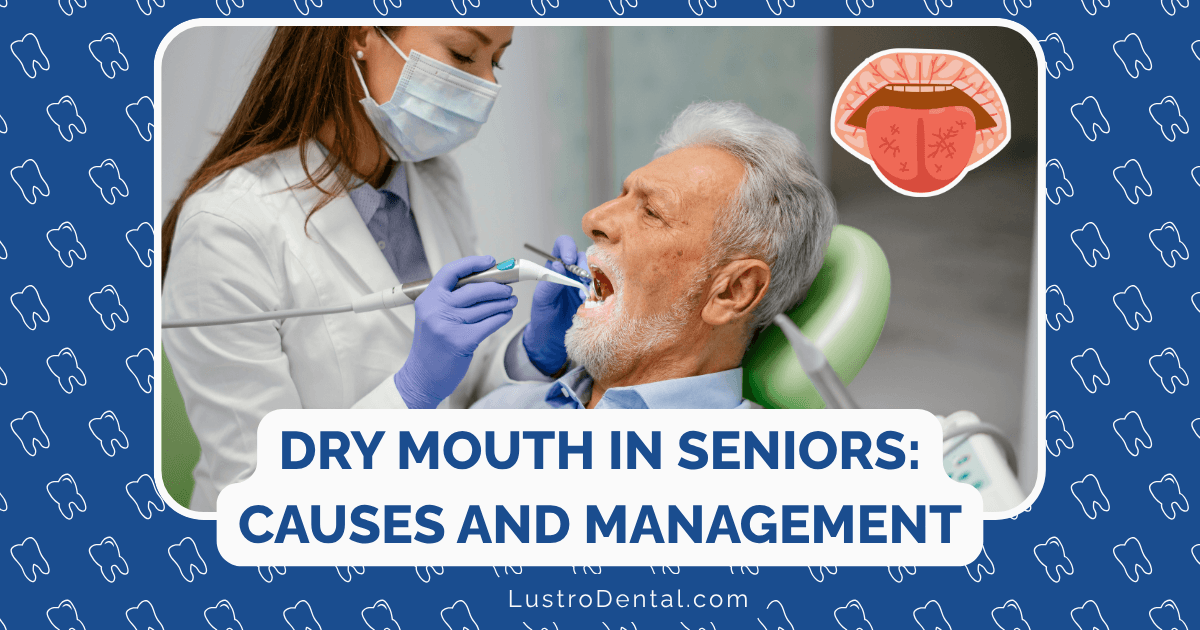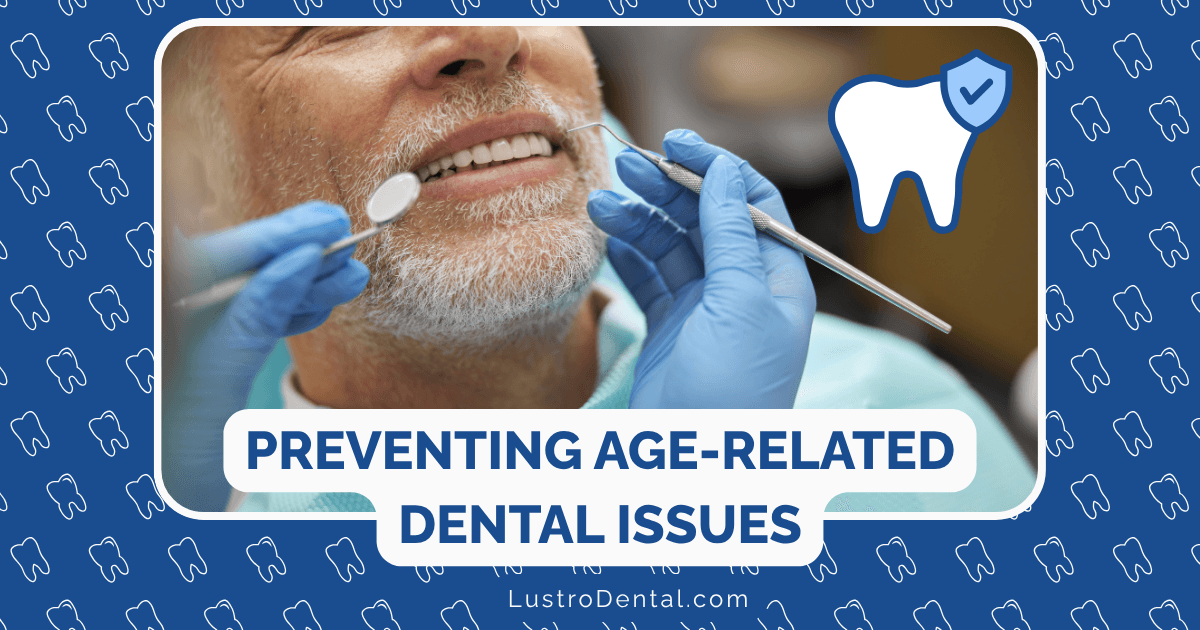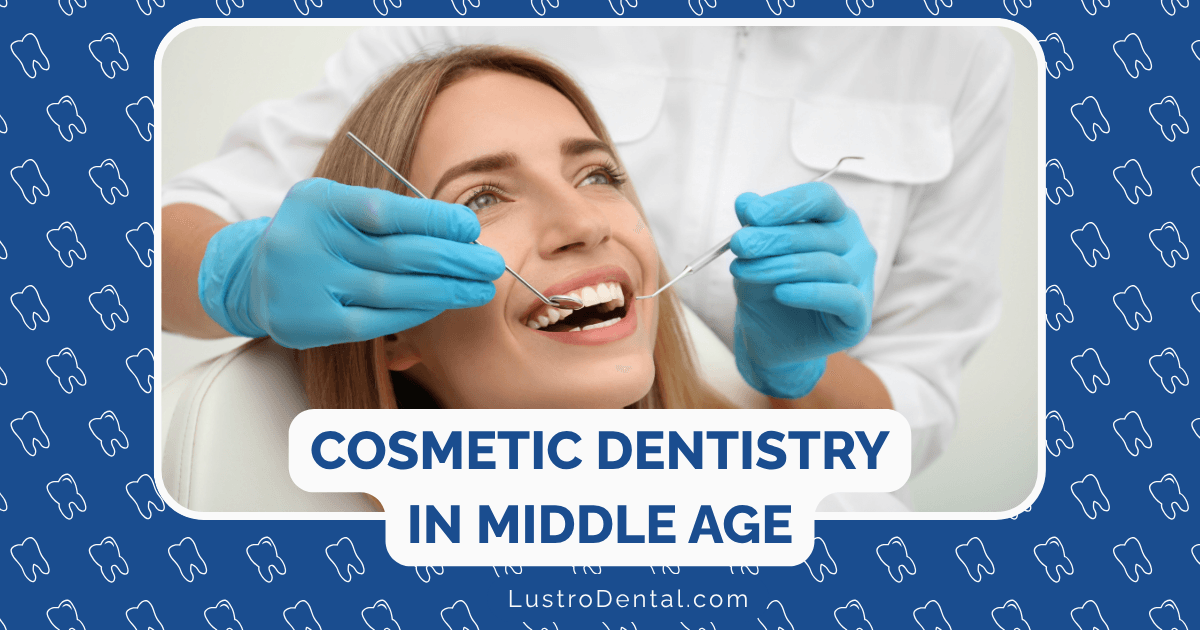Managing Existing Dental Work as It Ages: Maintenance and Replacement

When I got my first crown at age 35, my dentist casually mentioned, “This should last you about 10 years with good care.” At the time, that seemed like forever. Now, as I approach the decade mark with this particular piece of dental work, I’ve become much more aware of how dental restorations age—and what we can do to manage them effectively.
If you’re like most adults, your mouth contains a collection of dental work accumulated over the years—perhaps a few fillings from your twenties, a crown from that unfortunate popcorn kernel incident, or maybe even an implant or bridge replacing a tooth lost along the way. These dental restorations aren’t permanent, but with proper care and timely intervention, you can maximize their lifespan and minimize complications.
Let’s explore how to effectively manage your existing dental work as it ages, from maintenance strategies to knowing when replacement is necessary.
Understanding the Lifespan of Different Dental Restorations
Before diving into maintenance, it’s helpful to understand the expected longevity of common dental work. According to data from the American Dental Association and clinical studies, here’s what you can generally expect:
Fillings
- Amalgam (silver) fillings: 10-15 years
- Composite (tooth-colored) fillings: 5-10 years
- Gold fillings: 15-30 years
- Porcelain fillings: Up to 15 years
“The lifespan of fillings depends significantly on their location in the mouth and the forces they endure,” explains Dr. Sarah Chen, a restorative dentist. “Fillings in molars that handle most of your chewing typically wear faster than those in front teeth.”
Crowns
- Porcelain crowns: 10-15 years
- Porcelain-fused-to-metal crowns: 10-15 years
- Gold crowns: 15-30 years
- Zirconia crowns: 15+ years
According to a 2024 study by High Street Dentistry, properly maintained high-quality crowns can sometimes last 20+ years, particularly those made from durable materials like gold or zirconia.
Bridges
- Traditional bridges: 5-15 years
- Implant-supported bridges: 15+ years
“The longevity of a bridge often depends on the health of the supporting teeth,” notes Dr. James Wilson, a prosthodontist. “If those teeth develop decay or gum disease, the entire bridge may be compromised.”
Implants
- Implant post (the titanium component in the jawbone): Potentially lifetime
- Implant crown (the visible tooth portion): 10-15 years
Research from Signature Smiles indicates that dental implants have a success rate of over 95% after 10 years, making them one of the most durable dental restorations available.
Dentures
- Complete or partial dentures: 5-8 years
“Dentures typically need replacement sooner than fixed restorations because the mouth changes shape over time as bone resorbs after tooth loss,” explains Dr. Chen.
Proactive Maintenance: Extending the Life of Your Dental Work
While dental restorations inevitably age, proper maintenance can significantly extend their functional lifespan. Here’s how to care for each type of restoration:
Caring for Fillings
- Brush gently but thoroughly around filled teeth using a soft-bristled toothbrush and fluoride toothpaste.
- Floss carefully around fillings daily, being careful not to snap the floss against the filling, which could dislodge it.
- Be cautious with temperature extremes. Very hot or cold foods can cause fillings to expand and contract, potentially creating gaps over time.
- Consider a night guard if you grind your teeth, as the pressure can crack or wear down fillings prematurely.
“I’ve seen patients make composite fillings last 15+ years with meticulous care,” shares Dr. Wilson. “Conversely, I’ve seen others need replacements after just a few years due to poor maintenance or teeth grinding.”
Maintaining Crowns and Bridges
- Pay special attention to the margin (where the crown meets the gumline) when brushing, as this area is vulnerable to decay.
- Use specialized flossing tools like floss threaders or water flossers to clean under bridges, where traditional floss can’t reach.
- Avoid using crowned teeth as tools (opening packages, biting fingernails, etc.) to prevent damage to the porcelain or bonding cement.
- Limit sticky foods like caramel or taffy that could potentially dislodge crowns or bridges.
“One of the biggest mistakes I see patients make with crowns is neglecting the gumline,” notes Dr. Chen. “Just because the crown itself can’t decay doesn’t mean the underlying tooth structure is protected if bacteria accumulate at the margin.”
Caring for Dental Implants
- Brush implants as you would natural teeth, paying special attention to all sides of the implant crown.
- Consider using an electric toothbrush with pressure sensors to avoid applying too much force.
- Use implant-specific floss or interdental brushes designed for cleaning around implants.
- Rinse with an alcohol-free antimicrobial mouthwash to reduce bacteria around the implant.
According to Barclay Family Dental, the most common cause of implant failure is peri-implantitis—an inflammatory condition similar to gum disease that affects the tissues surrounding an implant. Diligent oral hygiene is crucial for preventing this condition.
Maintaining Dentures
- Remove and rinse dentures after eating to clear away food particles.
- Clean your mouth after removing dentures using a soft toothbrush on your gums, tongue, and palate.
- Brush dentures daily with a soft-bristled brush and nonabrasive denture cleaner.
- Soak dentures overnight in a denture-cleaning solution to remove stains and bacteria.
- Handle dentures carefully to avoid dropping and damaging them.
“Dentures require different care than fixed restorations,” explains Dr. Wilson. “Many patients don’t realize that regular cleaning of both the dentures and the oral tissues is essential for preventing irritation and infections.”
Professional Maintenance: The Dentist’s Role
While daily home care is essential, professional maintenance plays a crucial role in extending the life of your dental work:
Regular Check-ups and Cleanings
Schedule dental visits at least twice yearly (more frequently if recommended by your dentist) to:
- Detect early signs of restoration failure
- Remove plaque and tartar from areas difficult to clean at home
- Assess the condition of existing dental work
- Polish restorations to remove surface stains
“Professional cleanings are particularly important for patients with extensive dental work,” notes Dr. Chen. “Hygienists have specialized tools that can clean areas around restorations that are nearly impossible to reach with home care alone.”
Professional Evaluations
During check-ups, your dentist should:
- Take periodic X-rays to check for decay beneath restorations
- Evaluate the margins of crowns and fillings for signs of leakage
- Assess the stability of bridges and implants
- Check your bite alignment, which can affect how restorations wear
Adjustments and Repairs
Minor issues with dental work can often be addressed before replacement becomes necessary:
- Small chips in composite fillings can sometimes be repaired
- Loose crowns can potentially be re-cemented if caught early
- Dentures can be relined to improve fit as the jaw changes shape
- Night guards can be adjusted to accommodate changes in bite
Recognizing When Replacement Is Necessary
Even with excellent care, dental work eventually requires replacement. Here are the key signs to watch for with each type of restoration:
Signs Your Fillings Need Replacement
According to the Oxford Family Dental Research, watch for these indicators:
- Sensitivity to temperature or sweetness that persists or develops around a filled tooth
- Visible cracks, chips, or wear on the filling surface
- Dark lines or discoloration around the edges of the filling
- Food frequently getting stuck around the filling
- Pain when biting or chewing on the filled tooth
- A filling that has fallen out partially or completely
“Don’t wait until a filling falls out to seek treatment,” advises Dr. Wilson. “By then, significant decay may have developed beneath it, potentially requiring more extensive treatment like a root canal or crown.”
Signs Your Crown Needs Replacement
Look for these indicators that a crown may be failing:
- Pain or sensitivity when chewing or when exposed to hot/cold
- Visible damage such as chips, cracks, or worn areas
- Looseness or movement when touched or during chewing
- Gum inflammation or recession around the crowned tooth
- A dark line at the gum margin or discoloration showing through the crown
- Changes in your bite or discomfort when teeth come together
“Many patients ignore a loose crown, thinking it’s not urgent if it hasn’t fallen off,” notes Dr. Chen. “However, a loose crown allows bacteria to enter underneath, potentially causing rapid decay of the underlying tooth structure.”
Signs Your Bridge Needs Attention
Watch for these warning signs with dental bridges:
- Difficulty cleaning under the bridge or persistent bad breath
- Looseness or movement when touching the bridge
- Pain or sensitivity in the supporting teeth
- Visible gaps developing between the bridge and gumline
- Chipping or cracking of the bridge materials
- Changes in how your teeth come together when biting
Signs Your Implant Needs Evaluation
While the implant post rarely fails after successful integration, watch for these concerns:
- Bleeding, swelling, or recession of the gums around the implant
- Looseness of the implant crown or the implant itself
- Pain or discomfort when chewing
- Visible damage to the implant crown
- Persistent bad taste or odor around the implant site
According to Staten Island Implant Dentist, implant restorations typically need replacement every 10-15 years, even if the implant post itself remains stable.
The Replacement Process: What to Expect
When the time comes for replacement, knowing what to expect can help ease anxiety about the process:
Filling Replacement
- Removal of the old filling and any decay that may have developed
- Preparation of the tooth for the new filling
- Placement of the new filling material
- Shaping and polishing for proper fit and appearance
“Many patients opt to replace old amalgam fillings with tooth-colored composites for aesthetic reasons,” notes Dr. Wilson. “This is a relatively straightforward procedure that can significantly improve the appearance of your smile.”
Crown Replacement
- Removal of the old crown, which sometimes requires cutting it off
- Evaluation of the underlying tooth and treatment of any decay
- Taking new impressions or digital scans of the prepared tooth
- Placement of a temporary crown while the permanent one is fabricated
- Cementing the new crown at a subsequent appointment
“The technology for crown fabrication has advanced significantly,” explains Dr. Chen. “Digital scanning and milling can now produce crowns that fit more precisely and look more natural than ever before.”
Bridge Replacement
- Removal of the old bridge
- Evaluation and preparation of the supporting teeth
- Taking impressions for the new bridge
- Placement of a temporary bridge during fabrication
- Fitting and cementing the new permanent bridge
Implant Crown Replacement
- Removal of the old crown from the implant abutment
- Evaluation of the implant and surrounding tissues
- Taking new impressions or scans
- Fabrication and attachment of the new crown
“Replacing just the crown portion of an implant is typically less invasive than other restoration replacements,” notes Dr. Wilson. “The implant post usually remains in place, making the process more straightforward.”
Cost Considerations and Planning
Dental work replacement can represent a significant investment. Here are some strategies for managing these costs:
Insurance Coverage
Most dental insurance plans provide some coverage for replacement restorations, but policies vary widely:
- Many plans cover replacement of fillings and crowns after a certain period (often 5-7 years)
- Some plans may require documentation that the replacement is medically necessary, not just cosmetic
- Coverage percentages typically range from 50-80% of the cost, up to annual maximums
“I always recommend that patients check with their insurance provider about coverage before proceeding with replacement of major dental work,” advises Dr. Chen.
Phased Replacement
If you have multiple restorations needing replacement, consider a phased approach:
- Address the most urgent issues first (those causing pain or at risk of infection)
- Create a timeline for replacing other restorations based on their condition
- Coordinate with your dentist to maximize insurance benefits, potentially spreading treatment across plan years
Financing Options
Many dental offices offer payment plans or financing options for more extensive work:
- In-house payment plans may allow you to spread costs over several months
- Third-party financing companies like CareCredit specialize in healthcare expenses
- Some practices offer discounts for prepayment or membership plans that reduce costs
Preventive Strategies: Protecting Your Investment
Beyond basic maintenance, these preventive strategies can help extend the life of both existing and new dental work:
Dietary Considerations
- Limit acidic foods and beverages that can erode cement and weaken restorations
- Reduce sugar consumption to minimize decay risk around restoration margins
- Be cautious with very hard foods like ice, nuts, and hard candies
- Avoid using teeth as tools for opening packages or cracking shells
Protective Devices
- Night guards protect against grinding and clenching forces
- Sports guards prevent damage during athletic activities
- Retainers prevent shifting that can place stress on restorations
Addressing Related Issues
- Manage dry mouth conditions, as reduced saliva increases decay risk around restorations
- Treat acid reflux to prevent acid erosion of teeth and restorations
- Address teeth grinding through stress management and protective devices
The Bottom Line: Proactive Management Is Key
Managing dental work as it ages isn’t just about extending its lifespan—it’s about protecting your overall oral health and avoiding more complex and costly procedures down the road.
“I always tell my patients that dental restorations are like the tires on your car,” says Dr. Wilson. “With proper maintenance and regular check-ups, you’ll get many miles out of them. Ignore the warning signs, and you might find yourself stranded with a much bigger problem.”
By understanding the expected lifespan of your dental work, maintaining diligent home care, scheduling regular professional evaluations, and addressing issues promptly when they arise, you can maximize the longevity of your dental restorations and maintain a healthy, functional smile for years to come.
Have you had experience with aging dental work? Share your stories in the comments below to help others navigate this important aspect of oral health care.







